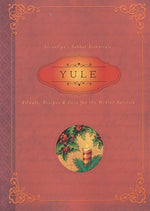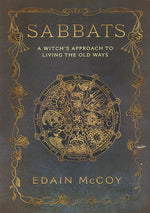The Sabbat of Yule/Winter Solstice (December 20 or 21)
Karen Charboneau HarrisonShare
© Copyright 2005-2017 Karen Charboneau-Harrison, All Rights Reserved.
Many Christmas customs and much of our Christmas music of any antiquity originated in the Western European Pagan celebrations of Yule. Customs attached to the Yuletide constellation of Saints' Days: Stephen, Basil, Nicholas, Lucia, Barbara, Sylvester and the Epiphany derive almost entirely from Yule. There is a richness of customs concerning food, fires, plants, animals, wild birds, stars, mummers, music, magic, clothing, angels, social roles, gifts, lights, auguries and so on, endlessly. Imagine the figure of baby Dionysos, newborn of Demeter or Persephone (depending on which myths you read), lying swaddled on a bed of straw in a harvest basket on the threshing floor, his head surrounded by a gold nimbus (halo) looking exactly like the Christ-child in the crèche and evoking the same feelings of love and mystery as does the image of the Baby Jesus born in the stables.
The Winter Solstice is the fire-festival of Yule with its Yule-log saved from the previous year's fire to kindle the flames for the new years's celebrations. To the ancient Egyptians it marked the birth of Osiris. To the ancient Persians it celebrated the birth of Mithras, the all-seeing Sun, god of friendship. The Romans knew it as Saturnalia with its feasting and exchanging of roles of masters and slaves. Whatever the name and outward appearance of its festivities, however, Yule's esoteric meaning stayed the same - it noted the shortest day of the year with emphasis on the fact that from this time until the Summer Solstice, the solar forces, both material and spiritual, would be gaining in strength.
The word Yule can be traced to the ancient Celtic word 'hioul' which means wheel. It is the celebration of the return or rebirth of the Sun god, the Lord of Life, the Child of Promise. The rites are solemn yet filled with joy for they solve the paradox of Death and Rebirth. This festival represents the redemption of the world from death and darkness and is a celebration of hope and joy amidst the barrenness of Winter.
Reverence for trees is a part of the Western European Pagan heritage. The decorating of a tree with lights and the burning of the Yule log have their birth in this reverence. At one time in our ancient history it was felt that the sacrifice of a great tree to insure than life would go on was necessary. The burning of the great Yule log would bring good luck and the returning of life force. The fire was lit from a piece of the previous year's Yule log that had been tended all year and saved for this purpose.
This is the time of the Winter Solstice when the sun reaches the southernmost point in its journey across the sky and appears to remain motionless before beginning to re-ascend northward bringing with it light and the promise of springtime, life and warmth. This is the time for the death of the old god of the year, followed by the Goddess giving birth to the new Sun God. Yule is the time to end the period of darkness that has prevailed during Winter and has brought us into the gloom of barren trees and shortened days. It is the time to cast aside those inner doubts which have bound us and to welcome the growing light which shows us the ways of new beginnings.
This is the time of hope born anew.
Make some wonderful smelling incense to burn during the holidays this year! Here's a traditional Yule Incense recipe that we're sure you'll enjoy making and burning:
Mix together 2 tablespoons dried Pine Needles 1 tablespoon Red Sandalwood Chips 1 tablespoon Cedar chips; add 20 drops Frankincense oil 10 drops Myrrh oil 5 drops Cinnamon oil 5 drops Allspice oil 5 drops Pine essential oil, stir together and finish off by mixing in 2 tablespoons Frankincense Resin. Let your incense mixture 'cure' for a day or two before you burn.
| Recommended Products | |
 Yule Yule |
 Sabbats Sabbats |
 Yule Incense Yule Incense |
 Yule Oil Yule Oil |
